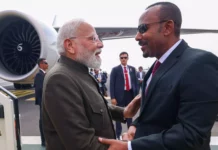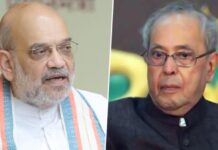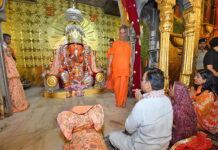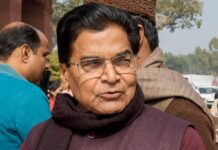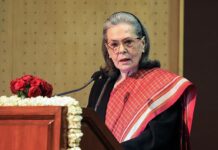 NEW DELHI: A new book unravels historical facts about how Radio Kashmir has over the past seven decades countered incessant malicious propaganda by various underground and FM stations that operate round-the-clock from across the border.
NEW DELHI: A new book unravels historical facts about how Radio Kashmir has over the past seven decades countered incessant malicious propaganda by various underground and FM stations that operate round-the-clock from across the border.
Replete with rare pictures, transcripts and documents from the archives of Jammu and Kashmir, Radio Kashmir: In Times of Peace & War reveals how Radio Pakistan and its notorious Radio Trarkhal beamed vicious misinformation against India to create unrest in the minds of people of Kashmir while trifling with their sentiments and identity.
It also says how under Operation Topac’, the ISI launched more radio stations, mostly along the Indo-Pak border to bombard airwaves with hostile ranting.
In addition to Jammu and Kashmir, Radio Pakistan had a meticulously planned coverage to target certain communities living in Indian cities, including New Delhi, Jaipur, Kanpur, Bikaner, Ambala, Saharanpur, Meerut, Aligarh, Farrukhabad, and parts of Nepal, rousing anti-India feelings, the book says.
And how Radio Pakistan and Azad Kashmir Radio acted as a bridge in establishing communication channels between the infiltrators and their masters. These messages, colloquially called Taranas, were most often in Gojri, Pahari, Urdu and Punjabi, spoken on either side of LoC and even in the Punjab province of Pakistan, according to the book.
Brought out by Stellar Publishers, this book emanates from research, based on a doctoral study by author Rajesh Bhat (posted in the Policy Division of Directorate General, All India Radio), in terms of the pivotal function performed by a public service broadcaster like Radio Kashmir during the times of both peace and war since 1947.
The book goes on to describe how Radio Kashmir performed an immensely significant role in safeguarding the strategic interests of both the government and the masses by addressing the core issues concerning the welfare and security of a nation.
And also how industriously it has attempted to weave a cohesive social and cultural fabric in Jammu and Kashmir in the face of turmoil, unrest and proxy war being waged by seditious elements.
Set up on December 1, 1947, with a makeshift studio in Sri Ranbir High School in Jammu, to countermand the specious rumors and fabricated information being disseminated to the refugees pouring in post-Partition, Maharaja Hari Singh inaugurated the station with his maiden broadcast to allay the fears of the people in the turbulent Valley.
To fight on another fraught front, the state government set up another unit of Radio Kashmir at Srinagar on July 1, 1948, with the prime aim to speak to the people in their own language, and also maintain harmony and brotherhood through the broadcasts, while effectively and skillfully countering the Pakistan propaganda.
The two wings of Radio Kashmir at Jammu and Srinagar, which initially started functioning under the J&K Information Department, continued to be under the control of the state government till April 1954 with this unique name, although they were relaying general programs and news from AIR, which was already functioning in the pre-Independence era.
The name Radio Kashmir was purposefully chosen to give an impression that the station was indigenously manned and operated by the people of the state and whatever they felt was being voiced through broadcast in its exact format and version, the book says.
This was deliberate since Pakistani media was operating its programs through some underground and notorious stations. On the contrary, Radio Kashmir was operating under State Secretary, I&B, JN Zutshi, who was also designated as Director General.
Thereafter, strategic broadcasts were planned and Radio Kashmir earned the unique distinction of serving people and the nation, in this conflict-ridden region, promoting and strengthening cultural and democratic institutions in the state, as also promoting people to people’ contact between the citizens of the two countries through drama and music broadcast over Radio Kashmir in Urdu, Punjabi and Gojri languages.
The author also draws attention towards the neglect of radio, especially during proxy war launched by Pakistan in 1989, when its propaganda machinery was at its peak in spreading anti-India canards in Kashmir. And hence, he pitches for the imperative need to have a concrete media contingency plan; a mechanism to plug the loopholes to restore the pristine glory of radio in Jammu and Kashmir amid numerous attacks on media men and media organizations in the state.
Further on, this volume dwells upon certain tactical measures and techniques that could possibly mitigate that gnawing friction through this medium, and facilitate a more constructive and creative communication in bringing these two nations closer, more so, as India and Pakistan share a cultural lineage.
As radio is a repository of rich cultural ethos with a mass base, it could and should ably lend a hand in border areas and tough terrains, to redefine the future relationship of India and Pakistan. PTI

